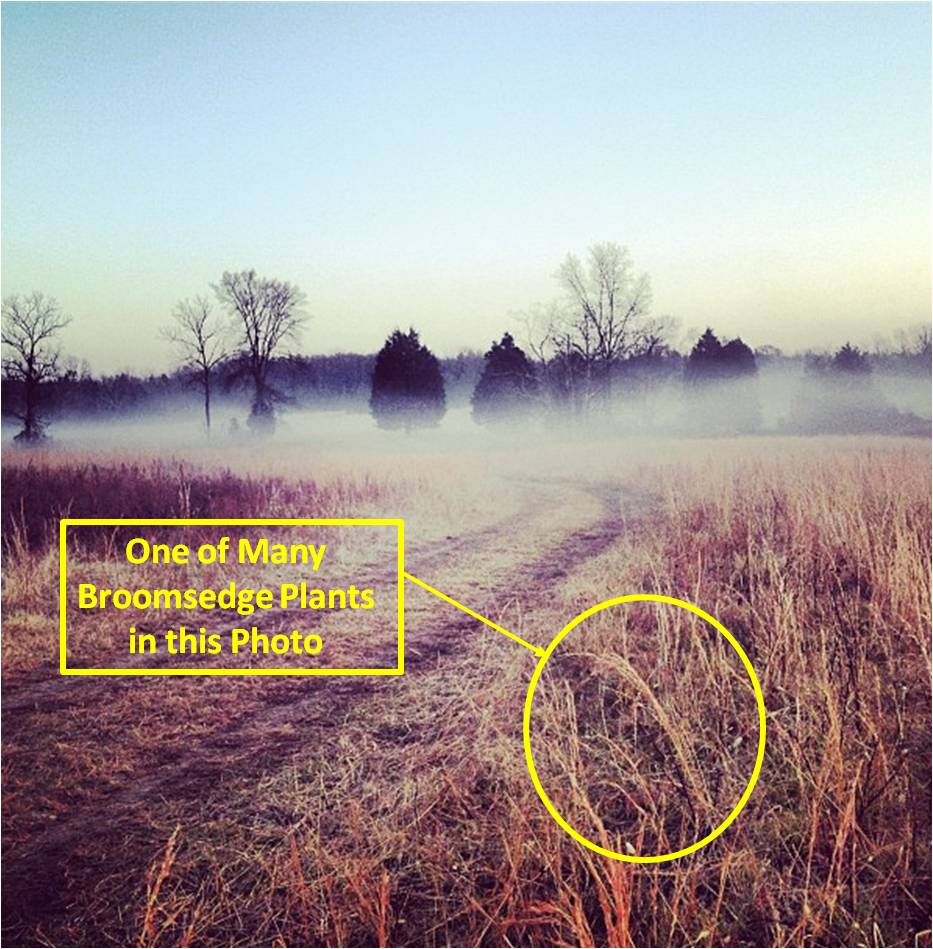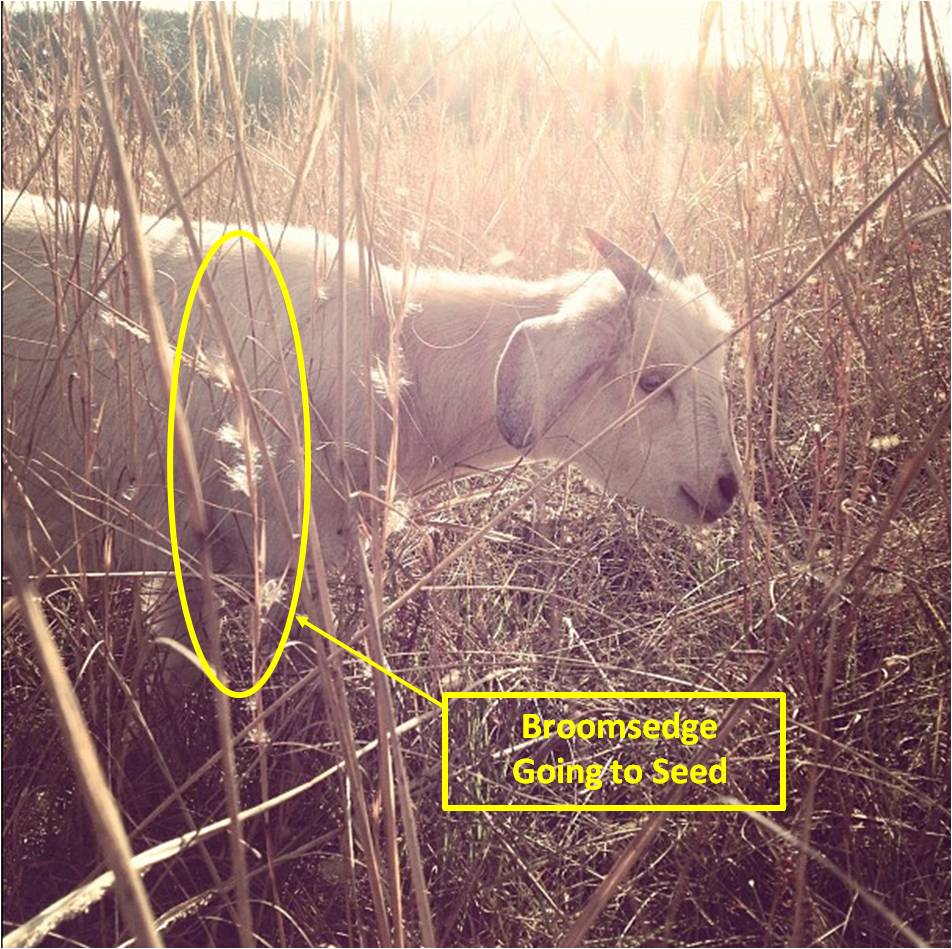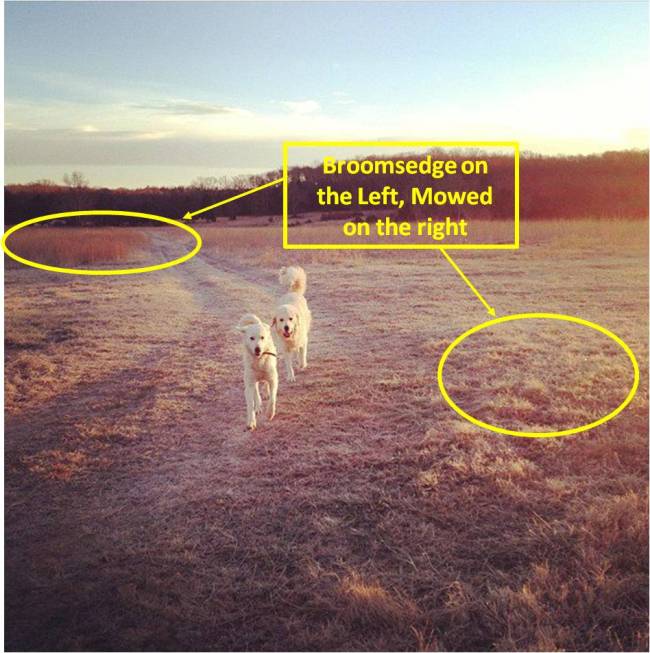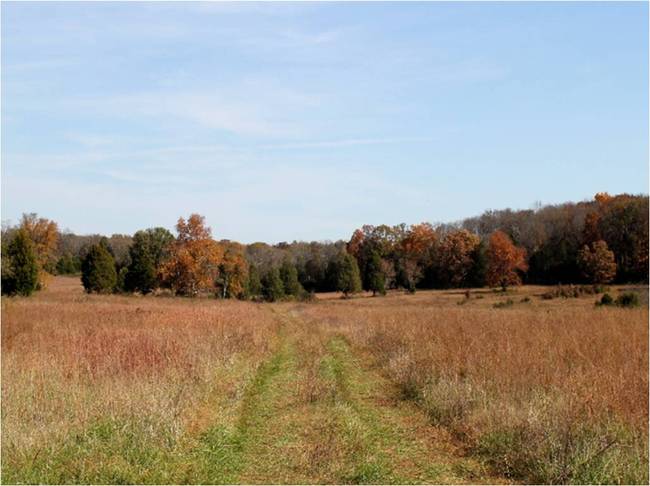Broomsedge is listed as a "Noxious Weed" on the USDA website. It's a sign of low fertility and it's one of the most invasive weeds around. We have a ton of it on our farm. Several tons, actually. On our first visit to the farm last October we didn't even know what Broomsedge was. Looking out onto the fields we saw the image below:
I don't know what this pasture looks like to the average untrained eye, but to my untrained eye it looked great. "Tall grass, something a goat would probably eat, fantastic." That was my initial reaction, I loved it.
Over the next few months I discovered that the reddish/orage hue of our 4 ft tall fields were the result of broomsedge: A noxious and invasive weed that is a sign of low fertility. Not so great afterall.
Whether you've recognized it or not, Broomsedge makes appearances in our photos all the time. In fact, here's the last three photos we posted on Facebook, all highlighting the Broomsedge:
 Fields of intermittent Broomsedge
Fields of intermittent Broomsedge Willow Foraging Amongst the 'Sedge
Willow Foraging Amongst the 'Sedge
 Broomsedge in the background. We clipped some of our pasture to promote regrowth and to plant some winter annuals
Broomsedge in the background. We clipped some of our pasture to promote regrowth and to plant some winter annuals
It turns out, however, that Broomsedge doesn't have to be so bad. Yes, it doesn't look pretty, the goats won't eat it, and everyone that lives around you will see your Broomsedge-filled fields all the time. But, it does serve SOME purpose. For us, it's an important purpose.
Broomsedge is a wind-break for the goats. It provides low cover and shields the wind. Since our goats live outside both day and night these things are important. We could mow all the broomsedge right now and have better grass growth through the winter. However, we choose not to. There's enough forage in between the broomsedge that the goats have plenty to graze.
Without the broomsedge the goats would be colder, and thus burn more calories keeping their bodies warm. The additional forage in place of the broomsedge would help offset (and maybe more than offset) the increased need for calories, but the goats would still be cold and more susceptible to things like pneumonia and colds.
The one benefit of Broomsedge made us decide to wait on mowing it all down. Some of it we mowed to grow a few paddocks of winter annuals, but 90% of our pasture remains untouched until February or March, when most of it will be mowed to promote grass regrowth next spring. In providing a wind-break, Broomsedge blocks the sun and thus needs to be removed for optimal spring forage (when a wind-break is less necessary).



Back to News